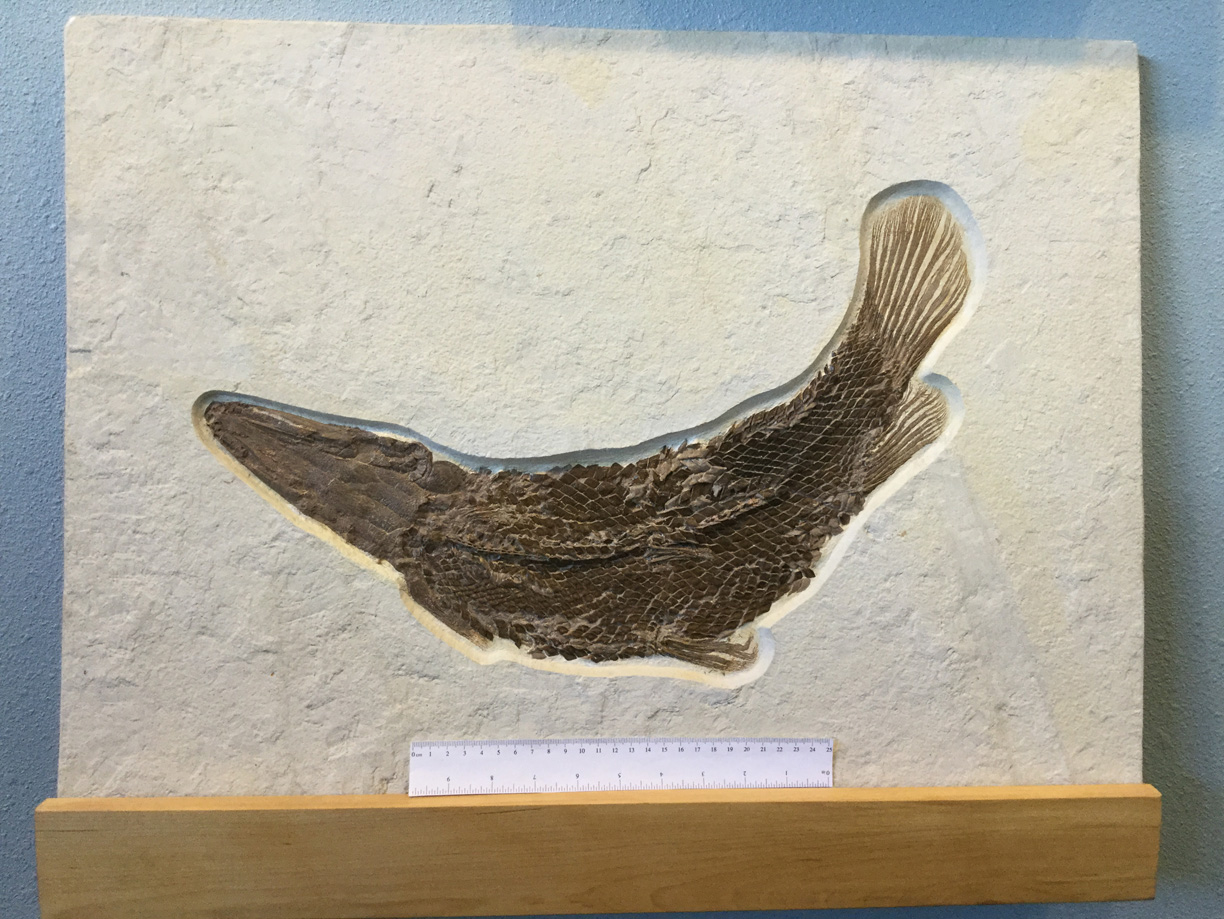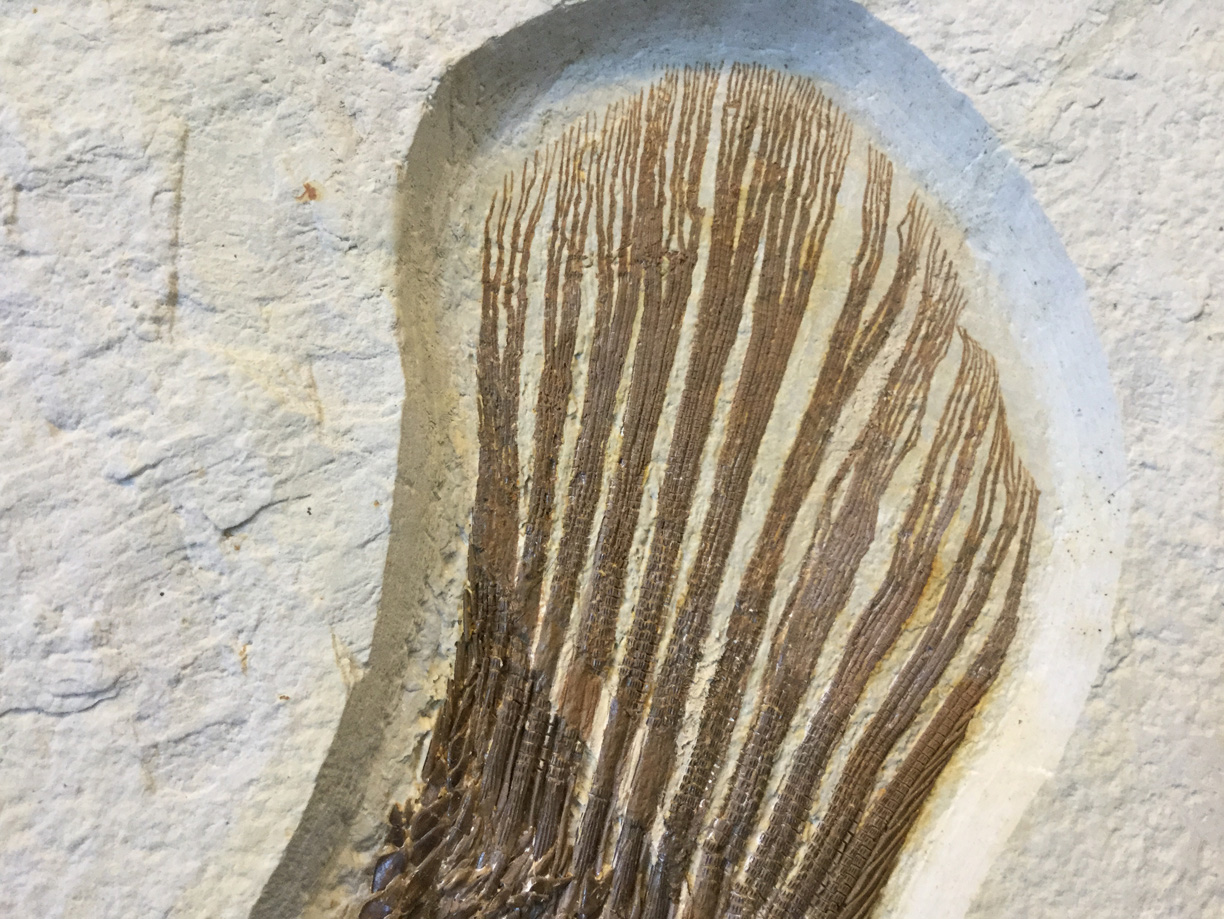

Eocene Green River Gar Fish
Atractosteus simplex
Green River Formation
Middle Eocene
Lincoln County, Wyoming
Green River Formation
Middle Eocene
Lincoln County, Wyoming
This specimen is a premier example of the rare gar fish from the Green River Formation. It is preserved in dorsal aspect rather that the lateral aspect usually seen. The skull, body, scales and fins all have excellent preservation and detail. Its needle-like teeth are clearly visible. The body has an arched profile and is 23 inches long. The slab is 25 inches by 18.5 inches. The slab is repaired and there is only minor restoration along the single fracture. This specimen is a dramatic display piece and would be a fine addition to any serious Green River collection.
Atractosteus simplex is the most common gar found in the Green River Formation. Gars however are a very rare component of the overall fossil fish population with fewer than 1 in every 5000 fossil fish that are excavated from the beds. A. simplex is characterized by its 12 tail-fin rays, smooth-sided scales, and medium-length snout with many sharply pointed teeth. They are significantly smaller than A. atrox with the largest know of the species at 28 inches.
Fossil gars have a much broader range than other Green River fossil fish. The earliest gars are Early Cretaceous in age (110 MYA). Gars prey mostly on other fishes and invertebrates like shrimp and crayfish. One reason it is thought that gars are rare in the Green River beds is because their preferred habitat may have been in the tributary streams and shallow weedy areas near-shore in the Green River Lake complex.
Atractosteus simplex is the most common gar found in the Green River Formation. Gars however are a very rare component of the overall fossil fish population with fewer than 1 in every 5000 fossil fish that are excavated from the beds. A. simplex is characterized by its 12 tail-fin rays, smooth-sided scales, and medium-length snout with many sharply pointed teeth. They are significantly smaller than A. atrox with the largest know of the species at 28 inches.
Fossil gars have a much broader range than other Green River fossil fish. The earliest gars are Early Cretaceous in age (110 MYA). Gars prey mostly on other fishes and invertebrates like shrimp and crayfish. One reason it is thought that gars are rare in the Green River beds is because their preferred habitat may have been in the tributary streams and shallow weedy areas near-shore in the Green River Lake complex.










